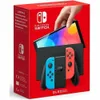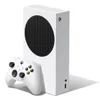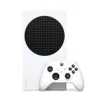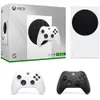I’ve been a PC gamer for 20 years — here’s why you should buy a PS5 Pro instead
The state of PC gaming has me pining for Sony’s new console
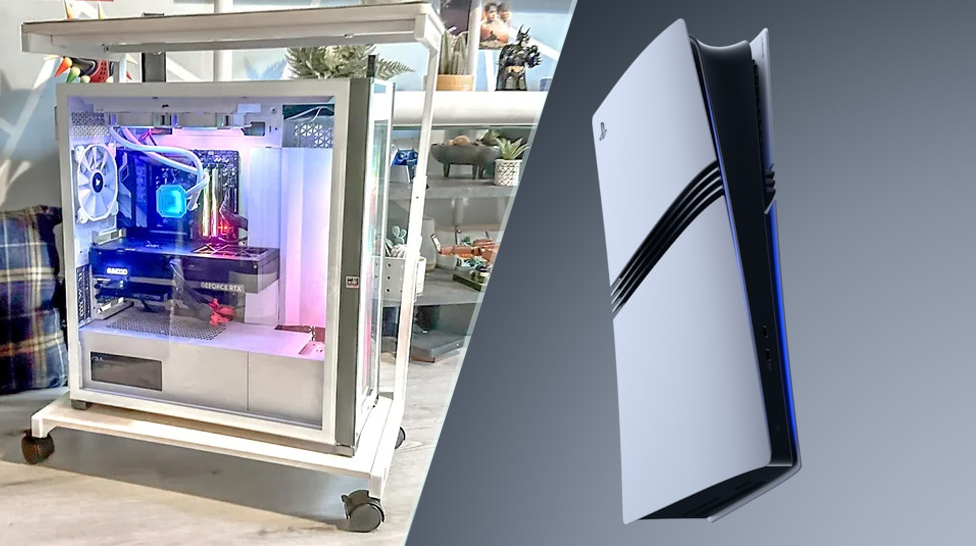
I’m guessing you currently look like the “Neck Vein Kid” from that all-time great meme if you’re a fan of gaming PCs, right? Damn did that guy ever want a C− on his calculus paper. On that note, I apologize if I’ve turned your face a shade redder than the surface of Mars. That headline is obviously provocative, yet it’s one I stand by for the most part for a multitude of reasons.
First off, let me say this: I adore PC gaming. I really do. After all, who’d buy a Nvidia RTX 4090 GPU if they weren’t obsessed with the best Steam games? When you are lucky enough to own one of the best gaming PCs and every component in your rig is running smoothly, sweet lord are the results ever glorious.
I’ve had the privilege of playing Red Dead Redemption 2 at 4K/120 fps thanks to the wizardry of Nvidia DLSS. The supremely smooth cowboy results are so compelling, I don’t think a console will be able to match what my rig is capable of until Sony rolls out the PS7. I’m guessing that’s a launch that will probably happen around the time we eventually work out how to make “Back to the Future Part II” style hoverboards.
Regardless of the words that follow, you better believe your last fistful of dollars that I’m going to play the hell out of the recently announced, long-awaited PC port of the original Red Dead Redemption.
It might be launching 14 years too late, yet the 25-year-old version of me who sobbed uncontrollably at the end of John Marston’s Wild West classic can’t wait to win all the slow-mo duels on my Samsung Odyssey OLED G9. Not only does Rockstar’s upcoming port support both ultrawide and super ultrawide aspect ratios, it will also, well, “rock”, Nvidia DLSS 3.7 support and Nvidia DLSS Frame Generation when it arrives on Steam and other PC storefronts on October 29.
PC vs PS5 Pro
Back to my internal seesawing “PC vs consoles” debate I have almost every day, I do feel lucky that I was able to secure a PS5 Pro pre-order last month. As excited as I am for Sony’s supercharged system, though, I can’t deny I have a complicated relationship when it comes to divvying up my affections between my gaming desktop and my consoles.
I love the PS5 (although that unshapely white box is getting sold as soon as the Pro arrives on my doorstep on November 7). I also think the Nintendo Switch OLED might just be the greatest machine the legendary Japanese company has ever made.
Make no mistake, I have a whole lot of space in my heart for both console and PC gaming.
Here’s the sticking point, though: console gaming is sooooo much more hassle-free than playing on PC. Whether you’re Team Xbox, Team PlayStation or Team Nintendo, the inherent plug and play nature of consoles make them immediately easy to appreciate. The “they just work” factor simply can’t be underestimated.
Rigging the game

PC gaming doesn’t work like that. It’s not simply a pleasurable, super-geeky passtime; it’s a full-on occupation. To double down on that point, I don’t know a single “casual” PC player.
I’ve experienced Alien: Isolation at a locked 90 frames per second on the astonishing Steam Deck OLED — hot dang am I looking forward to that newly announced follow-up. I’ve also reveled in the gaudy spectacle of Cyberpunk 2077: Phantom Liberty on the latest Asus ROG Zephyrus G14’s sensational OLED screen.
Yet whether cowering from the Xenomorph or having unhinged chinwags with Keanu, squeezing the maximum performance out of your favorite PC titles often requires a good deal of tedious settings tweaks.
When you start diving down the rabbit hole of how you can cling a few frames back, you know you’re in trouble. Despite the fact I own one of the best gaming monitors that supports G-Sync, I still almost always switch on Steam’s frame rate counter because the numbers themselves become the game. That’s screwed up.
The best thing to happen to this generation has been the normalization of 60 fps play.
By breezy contrast, the greatest thing to happen to this console generation has been the (mostly) pain-free normalization of 60 fps gaming via performance modes. I’m long enough in the tooth to remember being one of the first people in the world to review The Last of Us on PS3 back in 2013. Despite being one of the most amazing games ever made, my obsessive corneas can still recall trying to save Joel and Ellie during heated firefights that would often tank into the low 20s.
Fast forward 11 years and you can now enjoy The Last of Us Part 1 on a PS5 Slim at a rock solid 60 frames per second at a screen resolution the PS3 could only have the sweatiest dreams over. Console gaming, by and large, kicks serious ass in 2024… providing developers are given the time and budget to deliver on their vision.
Bugging out
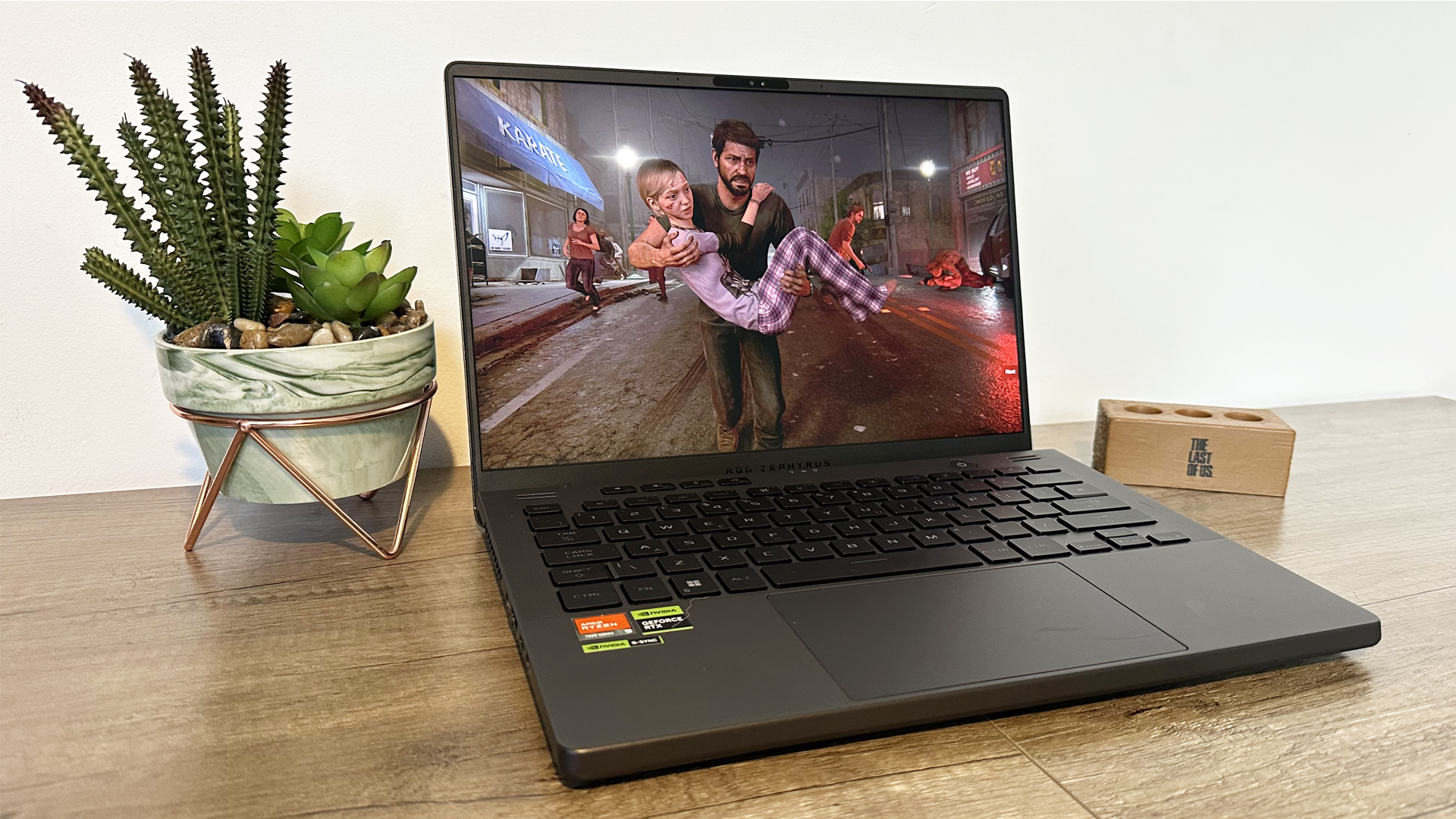
In stark contrast, Joel and Ellie’s remastered apocalyptic adventure was a complete car crash when it launched on PC in early 2023. A stuttering, bug-ridden mess, there was no gaming desktop in the world that could power through its jank.
Thankfully, Naughty Dog’s masterpiece is finally in great shape on PC. Yet it took a whole lot of post-launch patches to crowbar it into a good place. I’d wager it wasn’t truly playable on either home-built rigs or the best gaming laptops until months after its initial release. Compare and contrast to the experience PS5 players had the pleasure of enjoying when the moody remaster first launched in September 2022, and it’s a night and day example of PC players being whacked with the extremely painful short end of the stick.
It’s sad that so many PC versions of triple-A titles are often treated like a seeming afterthought. The Callisto Protocol was a stuttering mess on Steam when it launched back in late 2022, whereas it performed like a relatively smooth (if one note, extremely gory) dream on consoles.
Want the Hannibal Lecter of all-time bad PC conversions? Just look at Star Wars: Jedi Survivor. A fundamentally good game on console that’s still a borderline disaster 18 months later on PC.
Want the Hannibal Lecter of all-time bad PC conversions? Just look at Star Wars: Jedi Survivor. A fundamentally good game on console that’s still a borderline disaster 18 months later on PC because the studio still hasn’t been able to figure out how to fix its ruinous shader compilation stutter woes.
The semi-labored point I’m making is this: even the best gaming PC in the world will deliver subpar experiences if developers aren’t afforded the time and money to go that extra mile.
And to be clear, I’m not blaming people who possess more talent in their pinky finger than I do in my entire pasty Scottish frame. The fact we’re seeing so many subpar PC versions of legitimately great games speaks to the fact publishers see the platform as their least important priority in many cases. At least in my opinion.
Call me naive, but when you consider Steam has around 132m active users, you’d think publishers should be allowing their developers the means to deliver the absolute best work they’re capable of delivering.
The flipside of that coin is, even if devs are allocated the time to put a good amount of effort into the PC version of a PS5/Xbox Series X title, the fact PC gaming is such an inherently open-ended platform doesn’t do studios any favors.
Trying to crank out a satisfying experience that can run well on both handheld PCs and ultra-expensive desktops has historically proven to be a big challenge. And it’s one that doesn’t appear to be getting any easier.
God of phwoar
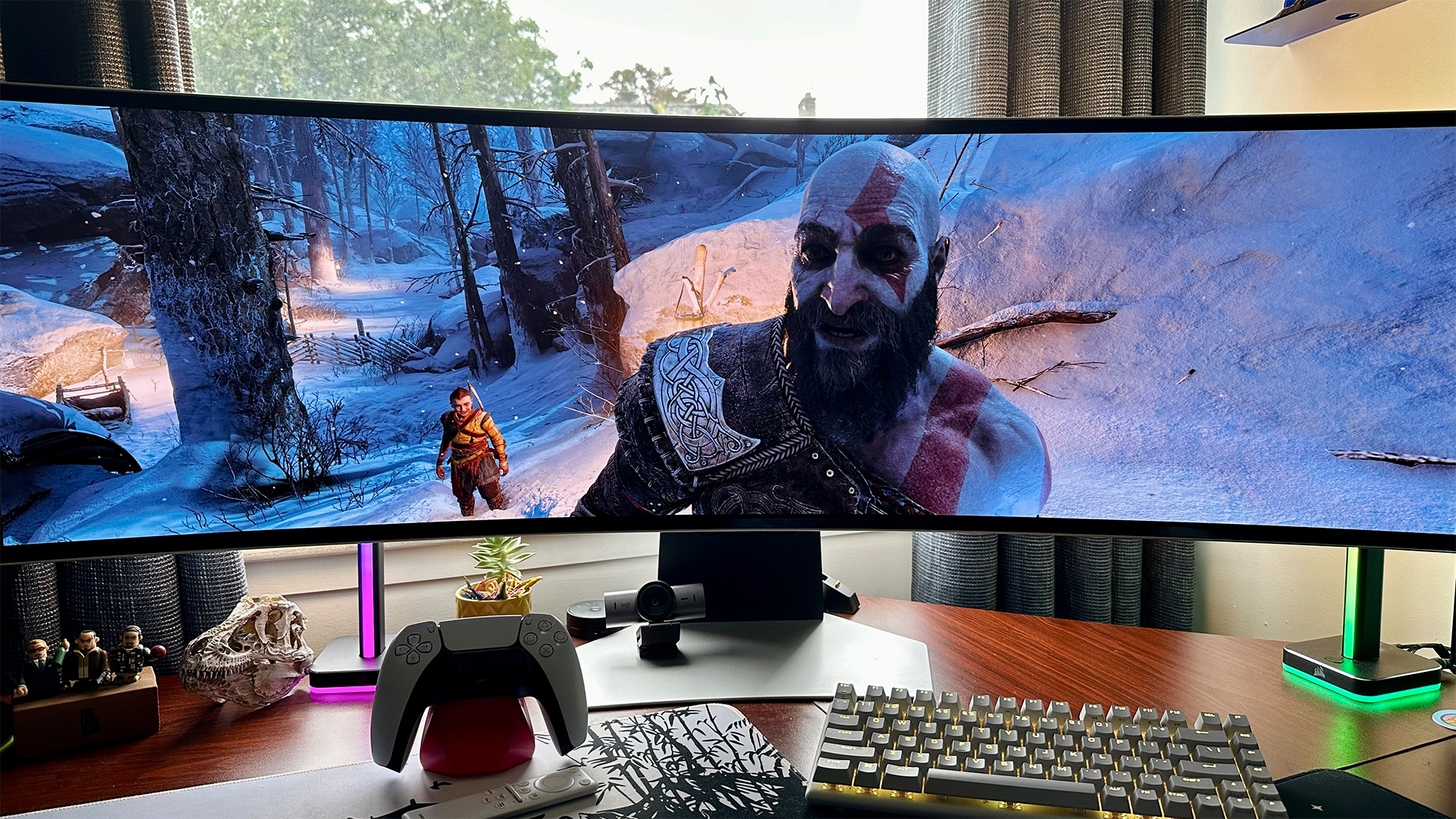
On a cheerier note, some PC ports can still amaze when they’re allowed enough time to bake in the oven. I recently had the pleasure of interviewing God of War Ragnarök’s developers regarding the game's recent release on PC — a collaboration between Sony Santa Monica and Jetpack Interactive. Within minutes it was abundantly clear just how much effort they’d put into this marvelous PC edition.
Support for 32:9 cutscenes if you own a super ultrawide monitor! Frame generation! Multiple forms of supersampling so that Nvidia, AMD and Intel users can all benefit from substantially boosted frame rates with minimal loss to image quality! That’s how you handle a PC port, folks.
The PC version of Ragnarök feels like an increasing outlier"
Sadly, whether due to budget limitations or time constraints, the PC version of Ragnarök feels like an increasing outlier. As long as publishers direct their teams to focus on the PS5 and Xbox Series X versions of the next smash hit game, PC will continue to be an overlooked, underserved platform — at least in the triple-A space.
I adore my PC, but I’ve gone through too many Blue Screens of Death, frayed screwdrivers and random crashes not to become salty over shambolic PC launches. As someone who built his first rig in ye olden times of 2004, I badly want video game studios to be granted the resources their higher ups can provide that the elite form of gaming deserves.
In a day and age where you can’t power past performance issues due to stutter struggle with even the fastest GPU on Earth, the PS5 Pro and its DLSS-esque PSSR supersampling could yet provide high-end, PC-like experiences for the (ahem), “low” sum of $699.
If you have the means, dedication and patience, gaming on a PC is the absolute best. However, if you're time-poor and want minimal fuss at the end of a long work day and crave the comfort of knowing your games device is simply going to switch on without issue, consoles will continue to give you the most reward for the least effort, prosumer-focused or not.
Samsung 49" Odyssey Neo G9 Curved OLED Gaming Monitor: was $1,599 now $949 @ Amazon
ACT FAST! This extra large and in charge super ultrawide gaming monitor boasts a ridiculously fast 240Hz refresh rate, a mere 1ms response time and supports both G-Sync and FreeSync Premium Pro frame rate-smoothing features. In our Samsung Odyssey OLED G9 review we said the Editor's Choice monitor is one of the most immersive displays out there. If you have a huge desk, meet the gaming display of your dreams. Just note this is a limited time deal, so don't hang around if you want one!
More from Tom's Guide
- I own one of the most powerful gaming PCs — and I regret it
- PS5 Pro vs. PS5 — here's the biggest upgrades
- PS5 Pro is overpriced — here’s why I’m buying one anyway
Sign up to get the BEST of Tom's Guide direct to your inbox.
Get instant access to breaking news, the hottest reviews, great deals and helpful tips.

Dave is a computing editor at Tom’s Guide and covers everything from cutting edge laptops to ultrawide monitors. When he’s not worrying about dead pixels, Dave enjoys regularly rebuilding his PC for absolutely no reason at all. In a previous life, he worked as a video game journalist for 15 years, with bylines across GamesRadar+, PC Gamer and TechRadar. Despite owning a graphics card that costs roughly the same as your average used car, he still enjoys gaming on the go and is regularly glued to his Switch. Away from tech, most of Dave’s time is taken up by walking his husky, buying new TVs at an embarrassing rate and obsessing over his beloved Arsenal.
-
pyronaut I used to be a PC gamer. I sold my self built gaming rig over a decade ago, switched to console and never looked back. Mostly for the reasons you mentioned (time savings being the highest on the list), but also for cost.Reply
You can get reasonably good performance with an affordable box that sits in your living room and play on your couch on a pretty big screen.
The PS5 pro is pushing the "affordable" part of that equation, but I'll probably get a discounted one soon after launch and sell my PS5 to offset the cost.
The freedom of PC gaming can't be matched by consoles, but the trade-offs aren't worth it for me personally. -
Sfernald I will buy into the PlayStation ecosystem just as soon as I can play my 1500 owned Steam games on there.Reply -
natster87 I usually go through a cycle where I end up buying one of these consoles, only to find myself being disappointed by screen tearing, frame drops and inconsistent performance. When the PS5 came out, I bought it thanks to guys like this saying 'ditch PC, get on board with console'. I tried it before with PS4, PS4 Pro, but the thing is I always end up going back to PC. I have a top end system with a RTX 4090 and am looking forward to the RTX 5090. This is perhaps the first time I am not giving in to all this nonsense about the PS5 Pro. Maybe PS6 but it doesn't really feel worth it to me. I will stick with my PC and wait for Sony releases to drop on PC. I can wait, I have thousands of games across Steam, Epic etc.Reply -
Miklevey I’m a long time Nintendo and PS console user for over 25 years. I was ready to get a pS5 but stopped simply because of storage issues. Even the 4tb SSD upgrade is not enough to make it worth it for me. I refuse to constantly uninstall games to play the ones I want. Technology is great but when you have to spend all your time jumping through hoops it becomes a waste of time.Reply


